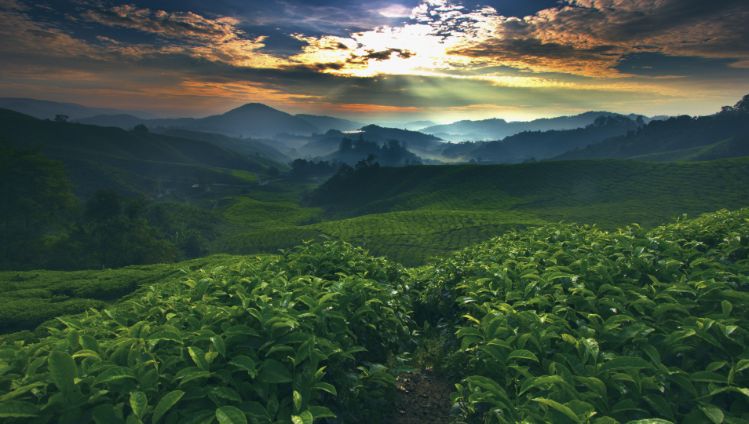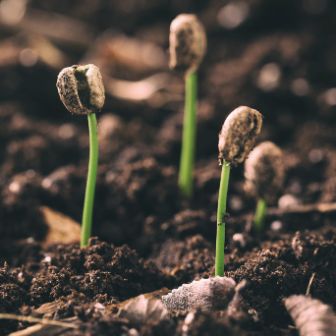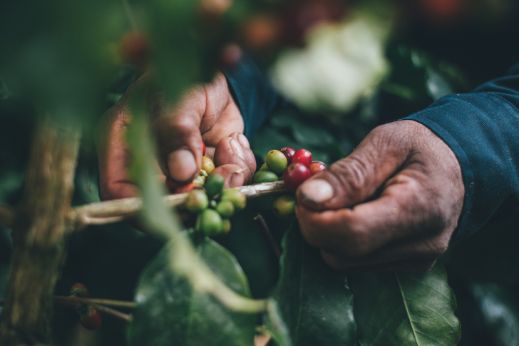
Cultivation & beans
It’s all about the bean
A special coffee needs special coffee beans. To achieve the hallmark full-bodied aroma of our Emmi CAFFÈ LATTE, the quality of the coffee beans needs to be of the very highest standard.
To guarantee this quality, we use 100% Arabica beans. But what does that actually mean, Arabica? And why don’t we use Robusta beans? Here you'll find answers to these questions, as well as learn about the conditions coffee plants need to thrive.
Marketing cookies necessary
Please accept the relevant cookie category to view this content
Coffee farming: What coffee beans need to thrive
The best growing conditions for coffee plants are found between 24 degrees north latitude and 24 degrees south latitude at altitudes between 600 and 2,400 metres above sea level. This zone stretches once around the globe like a belt – which is why it's also referred to as the coffee belt. In the countries falling within this belt, we go in search of the best coffee beans the various regions have to offer.
We are very selective when it comes to choosing the best Arabica beans. First of all we take a closer look at the territory where the beans grow – i.e. the location, the climate and the soil. The pH value of the soil must be between 5 and 6 to give the plants the optimum conditions in which to thrive. Added to this, it is important that there is enough rain and shade. Only when all of our demands are met do we nod our heads in agreement: Yes, we can make real premium coffee from these beans.
But the altitude of the plantations also has a significant influence on the growing process and the different flavours that develop. Our Arabica plants have their traditional home in the highlands. At altitudes above 900 meters, the coffee cherries on the bushes grow more slowly. This results in both the wide variety and unmistakable strength of aromas. As they ripen, the cherries gradually change colour from green to yellow and finally to red: the perfect time for harvest.
We source our coffee beans exclusively from the Rainforest Alliance Certified coffee farms. Not only are these farms committed to protecting nature and conserving resources; they also take special care during harvesting. Many farmers prefer to harvest by hand rather than by machine because coffee cherries ripen at different speeds even on the same branch. Only the ripe cherries are picked off by hand, while the unripe ones are given more time to mature.
The beans then make the long journey to Switzerland to be further processed after roasting in our production facilities. Do you want to know what goes on there? Click here to read the article “Symphony of the Bean”, in which we explain how the coffee beans are processed before they end up in your cup.
Coffee beans: Arabica vs Robusta
The complex aroma of Arabica coffee lies in its genes. Its DNA strand is twice as long as that of Robusta beans. This natural complexity means beans with flamboyant flavour profiles ranging from nutty and chocolaty to fruity and flowery. Up to 1000 different aromas are contained in very single bean!

But:
Arabica plants are small, sensitive souls. They only feel comfortable at altitudes between 600 and 2,400 metres and need constant temperatures of between 15 and 25 °C. They are adverse to drought and frost. They also don't take too fondly to direct sunlight. That’s why they like trees to give them shade.
Robusta plants thrive better in lower-lying regions. Extreme weather conditions and direct sunlight don't bother the Robusta varietal. It's also very resistant to insects. However, the taste is somewhat bitter and more intense than Arabica beans – but the caffeine content is twice as high. This makes it the ideal bean for strong, full-bodied espresso. For our Emmi CAFFÈ LATTE, however, we use only Arabica beans – their complex aromas can't be beaten!
Do you want to know more about our coffee? Here you can find out more about the countries of origin of the coffee we use and what we do to promote sustainability.

